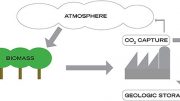 When most people talk about renewable energy they are referring to wind and solar power, which tend to dominate the news and their deployment is growing rapidly. However, a problem of wind and solar power is their intermittency – that is, where is electricity to come from when the sun doesn’t shine, and the wind doesn’t blow?
When most people talk about renewable energy they are referring to wind and solar power, which tend to dominate the news and their deployment is growing rapidly. However, a problem of wind and solar power is their intermittency – that is, where is electricity to come from when the sun doesn’t shine, and the wind doesn’t blow?
INTERMITTENCY
Coal-fired power stations were designed to provide baseload power. This means they were meant to run fairly constantly, providing a reliable supply of electricity, whatever the weather. In these conditions they run at their most clean and efficient. However, due to the generation of increasing amounts of wind and solar power and the prioritising of these supplies to increase the share of renewables, the situation is shifting in a number of countries so that coal-fired power stations now have to provide the backup power. As a result, coal-fired stations have to be more responsive to fluctuations in demand than previously.
The more frequent ramping up and down of coal-fired power stations increases the wear and tear on the plant, and so the maintenance burden goes up. In addition, the efficiency of the power plant falls. Thus an unfortunate and inadvertent result of increased use of wind and solar power can be increased emissions of CO2 from the supporting coal-fired power plant.
A way to avoid this situation, while still increasing the use of renewable energy sources, is to use more biomass. Biomass is biological material obtained from living or recently living plant matter that can be processed into electricity, fuel and heat. Biomass is a renewable resource as it takes up CO2 when growing, which is then released on combustion. If more biomass replaces that which has been used, then the cycle continues and there is no net release of CO2. Cofiring biomass with coal thus avoids the problem of intermittency, and this combination is a renewable resource that can also take advantage of the massive infrastructure that already exists to supply electricity from coal-fired power stations.
SUSTAINABLE?
There has been much discussion about the carbon neutrality and sustainability of biomass. Most biomass used for power generation is derived from forestry management and residues from timber processing. It includes tree thinnings and waste wood, which is the branches and bark left after the higher value material has been processed in a sawmill. Agricultural residues such as straw, husks and shells can also be used as biomass.
Many power stations that cofire biomass have introduced sustainability criteria to ensure that the biomass they used is produced to the required standard. The Sustainable Biomass Partnership (SBP) has developed a pan-European sustainability framework involving third party certification of the management systems of biomass producers, supplying biomass users. Currently, most biomass used in European power plants is produced in North American forests. Here the biomass for cofiring is mainly formed from the waste products of the forestry industry. As the demand for the waste increases, it has a value which gives an incentive for more and better forest management, and in fact, the forest area in the USA is growing.
BIOMASS IS NOT COAL
Biomass is a very different fuel to coal, which means that in general coal-fired power plants can add biomass at up to 10% by mass before many operational problems arise. One of the main differences between biomass and coal is its much higher moisture content. So most biomass is dried and made into pellets for ease of handling and transport before being delivered to coal-fired power plants. Considerable research has gone into torrefaction which is a thermal process to make biomass more coal-like, with better fuel characteristics than the original biomass. However, as yet, biomass torrefaction is not happening at a scale sufficient to supply cofiring power plants.
ISSUES
Biomass combustion in a coal unit is likely to have various issues. Biomass combustion produces less ash than coal and also generally has lower emissions of nitrogen oxides (NOx) and sulphur oxides (SOx). Biomass also tends to have a higher chlorine content which can lead to problems with slagging and fouling if it is cofired at a high percentage. For example, waste solids can slag and foul the boiler and waste acids corrode boiler surfaces. As the fraction of biomass in the fuel increases, there is less ash to absorb sticky biomass deposits such as potassium chloride and so the sulphur/chlorine ratio becomes more important. So there are positive and negative impacts when adding biomass to coal for cofiring.
It follows then that fuel chemistry management is key to fouling, corrosion management and reliable operations when cofiring. Thus it is important to establish clear fuel specifications, to have the ability to blend delivered fuels, and to carry out continuous monitoring.
COAL IS NOT BIOMASS
So, moving from biomass to coal, whether entire units or to a cofiring situation is more than just a fuel switch. In fact, there are various technical challenges.
Biomass is low density and must be kept dry, which means that transport and storage systems must be designed accordingly. There have been problems with handling biomass at coal-fired power plants, and bulk storage needs careful management and monitoring.
For example, air should be kept out of the storage facility. Drax power station in the UK, which uses eight Mt of biomass/y, has constructed four 75,000 t capacity domes for biomass storage.
There have been a number of serious fires, triggered by various dust problems at coal-fired units converted to biomass. As a speaker said at the 5th IEA CCC Cofiring biomass with coal workshop: “It is not a case of if there will be a fire, but when”.
TILBURY’S RISE AND FALL
A well-known example is Tilbury coal-fired station in the UK which was converted to biomass by RWE in 2011. The conversion was done incredibly quickly and included modifications to the feeders, mills, classifiers and burners to optimise combustion and improve flame stability when burning biomass. Two vacuum unloaders were installed for moving biomass from the ships to the plant to reduce problems with fugitive dust.
However, what the conversion of Tilbury power plant is best remembered for, unfortunately, is the fire of 27 February 2012. It started as a localised smouldering incident due to hot dust falling as smouldering embers from high level light fittings into the fuel bunkers below. It developed into a major fire but fortunately there were no serious injuries. After the fire, the station was closed, repaired and restarted but subsequently closed due to changes in RWE’s policies.
THE DRAX CASE
Many power plants are cofiring at 5-10%. Some are converting whole units. The largest power plant using biomass is Drax in Yorkshire, UK which provides 7-8% of the UK’s electricity demand. Drax power station uses more biomass than any other coal-fired power plant. Drax Power Station was constructed and commissioned in two stages, three units were completed in 1974, and the final three in 1986. Each unit has a capacity of 660 MW when burning coal, giving a total capacity of just under 4,000MW, making Drax the largest power station in the UK.
In July 2012, Drax began converting three of its six generating units to burn biomass, having already trialled cofiring at rates up to 50%. The first of the three units was successfully converted in April 2013 and the second in October 2014.
The wood is pelletised in the USA before transport to the UK. A subsidiary company in the USA has built two 450,000 t/y pelletising plants in SE USA, and an associated port at Baton Rouge. Covered railway cars are used to transport the pellets from the port at Hull to avoid getting them wet and to help avoid self-combustion. The biomass pellets have a lower ignition point than coal and so are more liable to self-combust. Overall Drax has spent around £500 million on the biomass supply chain. Drax measure the full carbon life-cycle of generating electricity from biomass and conclude that the average carbon dioxide saving, over the full life cycle, resulting from burning biomass in place of coal is more than 80%.
This is a major saving, but has required serious investment, risk-taking, much learning by doing, and government support as biomass is not economically competitive with coal. So although the CO2 savings can be impressive, there are many issues to be considered when converting coal-fired units to cofire biomass or to fully convert to biomass.
Further, biomass is a more finite renewable resource than wind or solar that could contribute more to CO2 mitigation than it currently does. But its use will always depend on local factors and competing demands for the biomass resource, and its role will be limited.
Debo Adams






Be the first to comment on "The pros and cons of biomass"